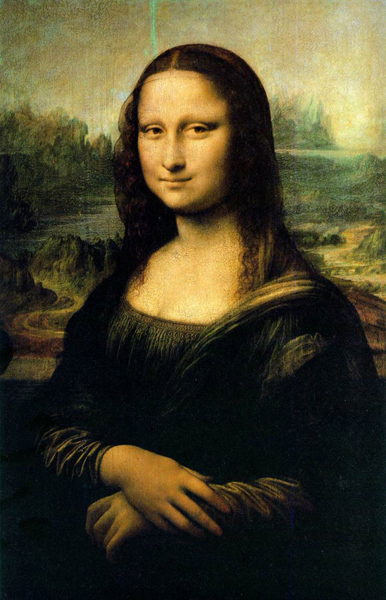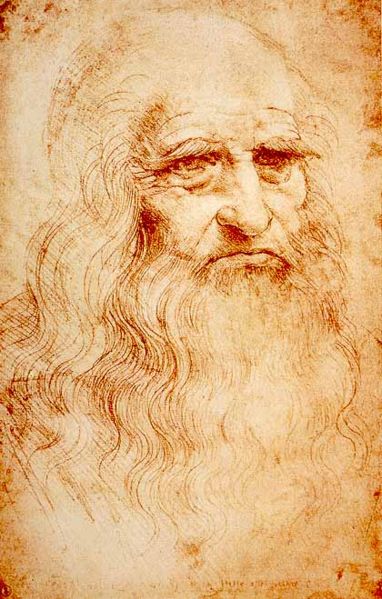
While we know many things about Leonardo di ser Piero da Vinci, there’s still much more just waiting to be discovered — and sadly, much we will likely never know. Widely considered an archetype of the “Renaissance man”, he was a man whose avid curiosity was equaled only by his intelligence and talent. Da Vinci was a scientist, mathematician, engineer, inventor, anatomist, painter, sculptor, architect, botanist, musician, and writer; the list honestly just goes on.
Many claim he was the smartest man to ever live — a true genius — and his talents in many areas of science and art are astonishing. After so many centuries of history, one thing’s for sure: he was one-of-a-kind.
We couldn’t possibly go through all of da Vinci’s accomplishments, so we’ve selected just a few. We’ve also selected some inventions that are associated with him, but where there’s also a lot of myth and misinformation. Let’s dive in.
The Parachute and Flying Machines
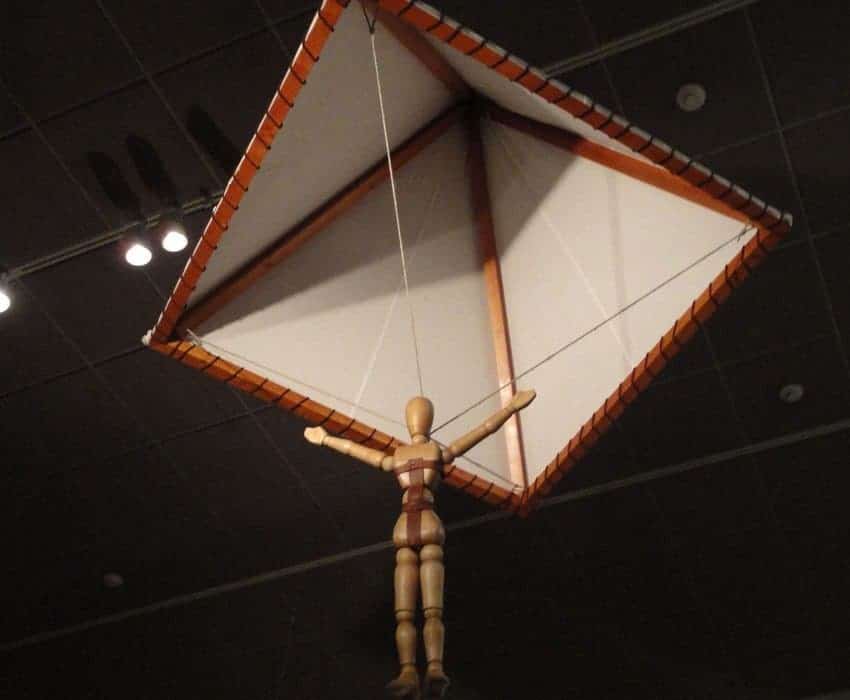
The first parachute had been imagined and sketched by Leonardo Da Vinci in the 15th century. It’s hard to believe something as “modern” as a parachute could have been invented over 500 years ago.
Leonardo’s parachute design consists of sealed linen cloth held open by a pyramid of wooden poles — about seven meters long. The invention would allow any man to “throw himself down from any great height without suffering any injury,” da Vinci said. Still, because his ideas were way ahead of his time, technology was not able to sustain his ideas, thus nobody invented a practical parachute until 1783.
Like many of his monumental discoveries, Leonardo’s parachute was never tested. However, the cool part is that in 2000, daredevil Adrian Nichols actually built a parachute based on Leonardo’s designs. Despite great skepticism from most people, the parachute worked smoothly and Nichols even complemented its smooth ride.
Leonardo also focused a substantial part of his work on flying machines. The desire to fly is a theme that constantly reappears, but he found it hard to overcome the pull of gravity (remarkably, his understanding of gravity was centuries ahead of his time). He designed several flying machines, including one that had a man-powered rotor. However, modern science has shown that this particular design couldn’t have worked.
Scissors
Something as simple yet as important as the scissors had major importance in the development of mankind. However, this is one of da Vinci’s more controversial inventions. That is to say, he didn’t really invent the scissors.
Archaeological evidence indicates that rudimentary scissors were first invented in Mesopotamia and ancient Egypt and cross-bladed scissors date from ancient Rome. Yep, scissors have been used for cutting materials for thousands of years, and they predate da Vinci by thousands of years.
However, it is possible that da Vinci made detailed sketches of scissors and contributed to an improved design. But da Vinci didn’t invent scissors — that’s possibly the most pervasive myth associated with the Renaissance man.
Mona Lisa
Okay, the Mona Lisa isn’t technically an invention, but can you argue against the impact this painting has had on the world?
Without a doubt, the most famous painting in the world, the Mona Lisa (or Gioconda) has fascinated people for centuries – and for good reason. It is said that just the lips took 10 years to make, and while that’s probably just a myth, the Mona Lisa’s mysterious smile has fueled an impressive amount of theories and hypotheses, with some hinting at its implicit (and maybe even sexual) hint but also because of the fact that the entire picture seems androgynous — it features both male and female traits. The entire picture — especially the enigmatic smile — is the crowning of a genius.
The painting is a portrait of Lisa Gherardini, but there’s more to the painting than just Lisa. Many have seen the Mona Lisa as a fusion of both male and female features, while others see in it the clear features of the Virgin Mary. Despite not being attractive in a traditional way, Gioconda embodies the ideal woman. Her gaze fixes the observer no matter where he is positioned (seriously, try it), and her legacy fixes a standard for art that was never achieved again.
Anatomy studies
There’s one visual work that da Vinci created that’s perhaps even more impactful than the Mona Lisa — while it’s not a painting, the Vitruvian Man is a spectacular drawing. It depicts a male figure in two superimposed positions, with his arms and legs outstretched in a circle and a square, respectively. The drawing is named after the ancient Roman architect Vitruvius, who believed that the human body could be used as a model for architectural design.
But this is just the tip of the iceberg in terms of da Vinci’s anatomical studies.
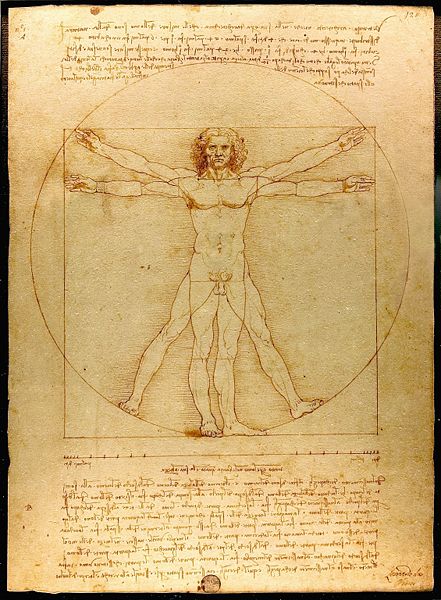
Leonardo’s formal training in the anatomy of the human body began with his apprenticeship with Andrea del Verrocchio, with his teacher insisting that all his pupils learn anatomy. As an artist, he grew fond of topographic anatomy, drawing many studies of muscles, tendons, and other visible anatomical features. His drawing of the Vitruvian man is iconic: almost a science fiction topic in 1487. The measurements are those of an average man, surprisingly correct (again, for the average man).
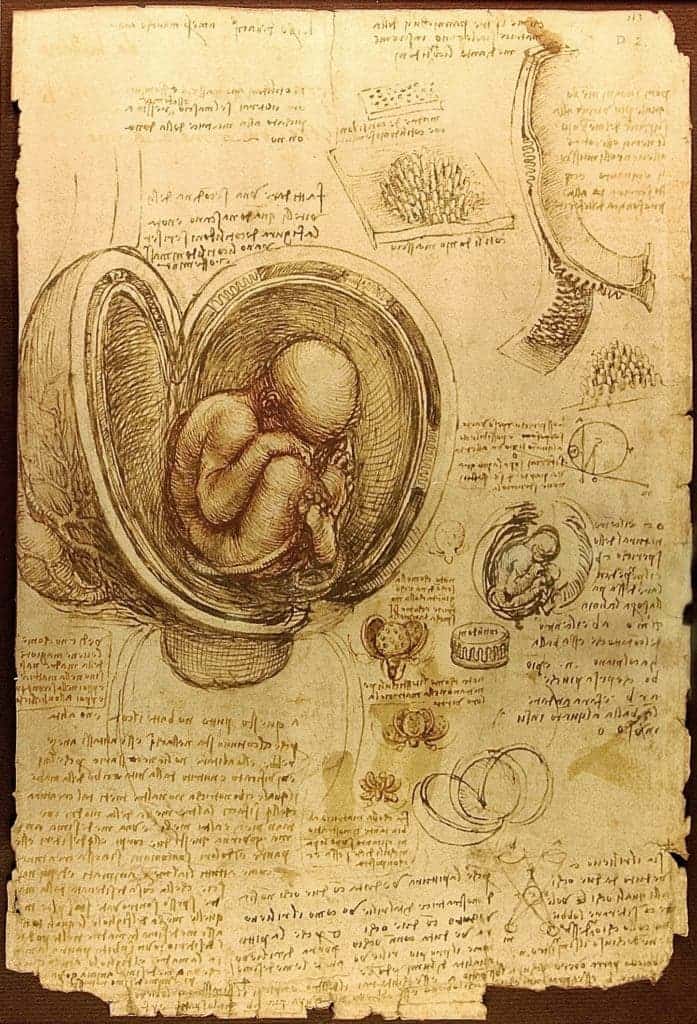
But Leonardo didn’t stop there. His most penetrating anatomical studies began in 1506 with his dissection of a 100-year-old man whom he had previously known. He continued acquiring human skulls and corpses for dissection, and as gross as that may sound, at the time, it greatly helped advance science. Unfortunately, he abandoned his anatomic interest after a while and his sketches were lost and forgotten for centuries — some to be never found again.
Engineering
It’s hard to know where to even start with da Vinci’s engineering feats. Here’s how Vasari, another Renaissance master, described his work:
He made designs for mills, fulling machines and engines that could be driven by water-power… In addition he used to make models and plans showing how to excavate and tunnel through mountains without difficulty, so as to pass from one level to another; and he demonstrated how to lift and draw great weights by means of levers, hoists and winches, and ways of cleansing harbours and using pumps to suck up water from great depths.
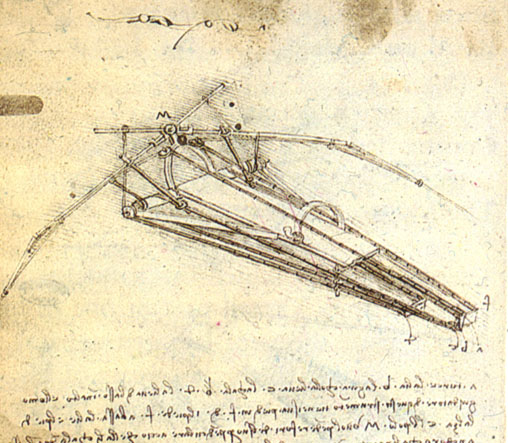
During his lifetime and even after that, Leonardo was remarkably proficient as an engineer. Mind you, this is centuries before Newton, when classical mechanics basically didn’t exist. Still, da Vinci deployed the same methodical observation as with his anatomical observations, and he showed a good understanding of momentum, centripetal force, friction and the aerofoil and applied these to his inventions.
Among the inventions that practically impacted the world there is the strut bridge, several mine designs, the automated bobbin winder, the rolling mill, several systems of cranks and pulleys, a lens-grinding machine, and several bridge designs.
Da Vinci also deployed remarkable ethics in his inventions. He didn’t want bad people to use his designs, so he kept a lot of secrets — as he did when he described how he invented a scuba-diving system, but did not explain exactly how it worked:
“How by means of a certain machine many people may stay some time under water. How and why I do not describe my method of remaining under water, or how long I can stay without eating; and I do not publish nor divulge these by reason of the evil nature of men who would use them as means of destruction at the bottom of the sea, by sending ships to the bottom, and sinking them together with the men in them. And although I will impart others, there is no danger in them; because the mouth of the tube, by which you breathe, is above the water supported on bags of corks.”
Still, with his imagination, and the limited technological capability of his time, it was hard to remain practical all the time, so some of his inventions were more creative than practical. No doubt, some of his inventions couldn’t have worked. But sometimes, his works proved to be stunningly good.
For instance, in 1502, Leonardo sent a bridge design for the Ottoman Sultan Beyazid II of Istanbul. The bridge was intended to span 240 m (720 ft), but the sultan didn’t follow Leonardo’s design because he considered such a bridge to be impossible. The sultan was wrong.
The bridge was proven possible by modern research, and a model of it was created, proving its efficacy. In 2001, a smaller bridge based on his design was constructed in Norway.
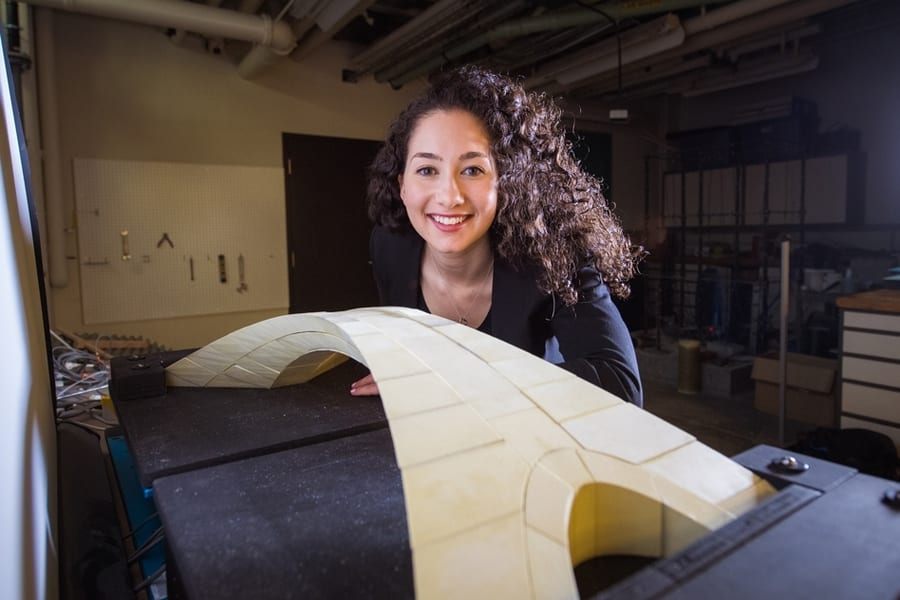
Sure, some of da Vinci’s ideas were unpractical, some were limited by the materials and technology he had access to. But many of his ideas were simply brilliant, showing a unique intuition and understanding of nature and physics.
Da Vinci’s artistic masterpieces, such as the Mona Lisa and The Last Supper, have captured the imaginations of people for centuries, but his inventions and scientific discoveries have paved the way for modern technology and innovation. He is the prototype of the visionary thinker, artist, and inventor and has left an indelible mark on human civilization. Undoubtedly, Leonardo da Vinci remains a testament to the boundless potential of the human mind.

